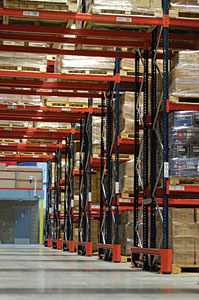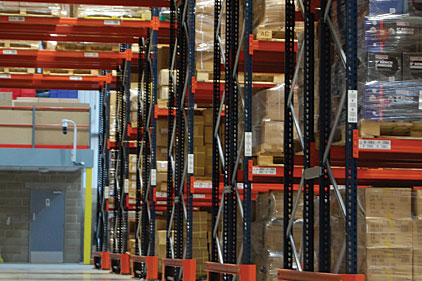
|
| Distributors looking to stay competitive are beginning to discover the value of mobility in their businesses, not only for their sales people, but for their entire staff. |
To achieve these elements, distributors should consider making a commitment to doing things differently and in the process understand that there will be a financial investment. According to Steve Epner, an accomplished consultant and facilitator in the distribution industry, despite financial investment, there is a strong business case for turning standard distribution management into a mobile, real-time platform.
“We’ve all heard the hype about everyone being able to do mobile,” noted Epner. “But is it true? Can everyone do it? Well, you have to ask yourself two questions. ‘Should I jump on the bandwagon and what is my return on investment?’ ”
Make the MEAP Jump
Jumping on the bandwagon is something that many distributors have already done and according to Epner it is time for the rest to seriously consider making the leap.
“We all know that the early bird may get the worm, but we also know the late worm lives longer,” he said during the “Mobile Technologies for Distributors” webcast presented by Modern Distribution Management. “What I am telling everybody out there is it’s sort of that time. It’s time for all the late worms to get going because the early birds have already left the stage. They’re already invested and they’ve proved that it works. The tools are no longer new. The connectivity to mobile devices is no longer new. Understanding the security involved is no longer new. You can use the knowledge that is there to move forward and it’s just waiting for your imagination to figure out the best ways to do it.”
Consider the current equipment and procedure being deployed for the process of adding a new customer. How many pieces of paper must be processed? How many different systems, computers, and employee desks must it cross before products are shipped? How long does this process take? Moving from the current back office system to a mobile enterprise application platform (MEAP) changes the way the back office does business and with this change, there often comes reputation improvement for the distributor.
A MEAP can be described as a suite of programs that manages the information coming from multiple back office sources into one central, secure, and accessible platform. This platform can then be accessed by any mobile device without compromising data security. This allows any staff provided access a transparent look into an account that is not only up-to-date, but is also not waiting for information from some piece of paper on a desk.
Consider how many times a customer order is wrong or outstanding invoices are incorrect. How many times has a salesperson gone on a sales call only to find an irate customer?
“With this mobility, you can change the sales call,” explained Epner. “No longer are you going in blind and with just an apology. You can go in with full knowledge of the situation and bring a solution to the table that benefits the customer and keeps the customer.”
Look Beyond Financial ROI
The sales team isn’t the only group going to benefit from the establishment of a MEAP system. One of the distinct benefits that distributors can reap is a positive change in reputation. With consistent, real-time access to customer information, the sales team, the counter people, the warehouse, and the back office all can see and provide quotes from the same information. According to Epner, this consistent and accurate information helps to develop and deepen a customer relationship with a distributor.
“It is always less expensive to maintain a relationship than it is to get a new one,” he said. “Getting your reputation out there, making yourself the easiest distributor to deal with, and being able to react on the fly all needs to figure into the ROI calculation. It can’t be just financial.”
Epner cautioned that it was still important to look at dollars but in the same sentence urged distributors to remember the capabilities that will be gained.
“These capabilities are going to be the foundation that you need in order to play in the marketplace of the future,” he said.
The mobility and accessibility are two capabilities that should be calculated into ROI. No longer tied to a desktop unit, the warehouse manager is able to know what is and is not correctly delivered to the branch for that day’s deliveries and pickups.
“What if I have a trend manager that watches everything that is going on? I have a customer that orders every Wednesday afternoon. Thursday morning at 1 a.m. he gets a text that says, ‘This order that normally shows up at this date and time didn’t show up.’ ”
Instead of waiting until the middle of the morning to even find the mistake, the warehouse manager is already aware of the situation and can arrive at work to find a solution. Records can be updated and the salesperson can instantly see what happened and how it will be fixed. Before the problem ever becomes a major issue, the company has solved it and the salesperson has contacted and dealt with the customer. Imagine what service like that would do for a distributor’s business as well as its reputation.
Avoid the Mish Mash
The most difficult part of putting in new procedures and technology can often be the lack of commitment. Epner strongly warned distributors to avoid one-off projects. A one-off product or project is something that is one of a kind or not part of a series, according to its dictionary definition.
“Watching what’s happening in the distribution industry, those distributors who end up with five or six one-off projects have no idea where they are going,” noted Epner. “People are doing their own thing; everything is a mish-mash, extra resources are being used, and you’re not being efficient.”
He suggested instead five major steps that help lead to success: Try one project, work it from start to finish, understand the value, build a strategy, and execute it across the entire corporation.
To listen to the entire webcast and learn more about MEAP,go to http://bit.ly/QJ0cPU.
Publication date: 10/1/2012



Report Abusive Comment